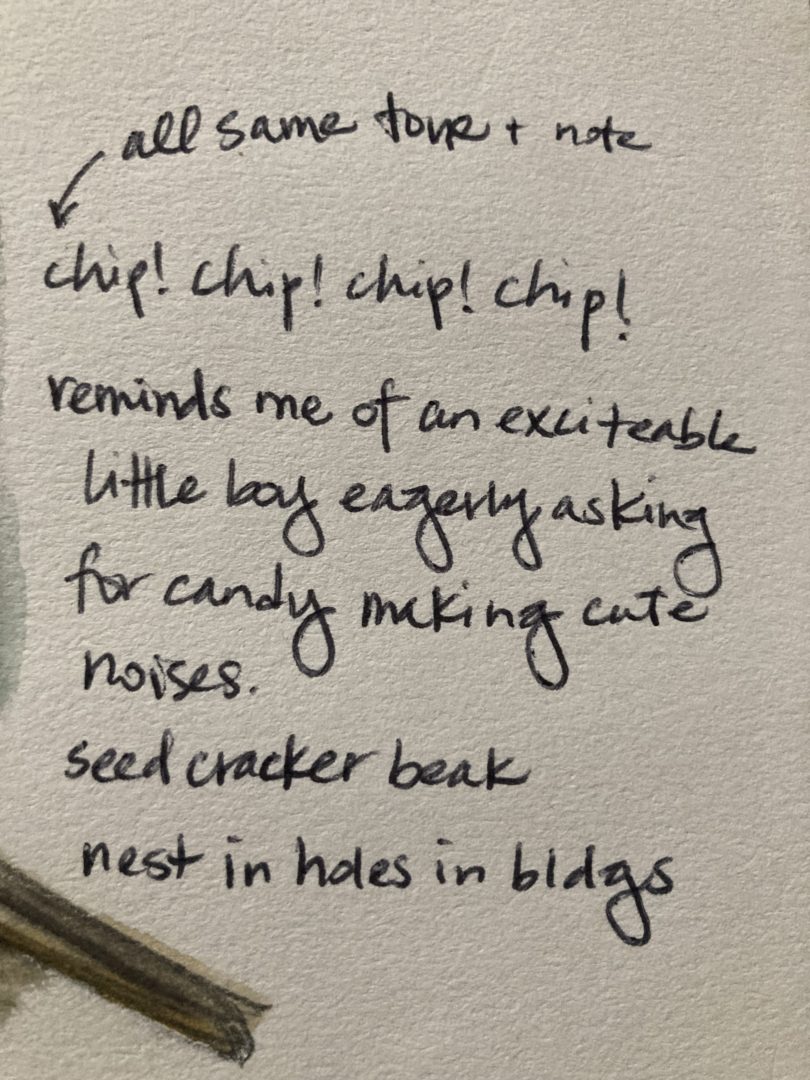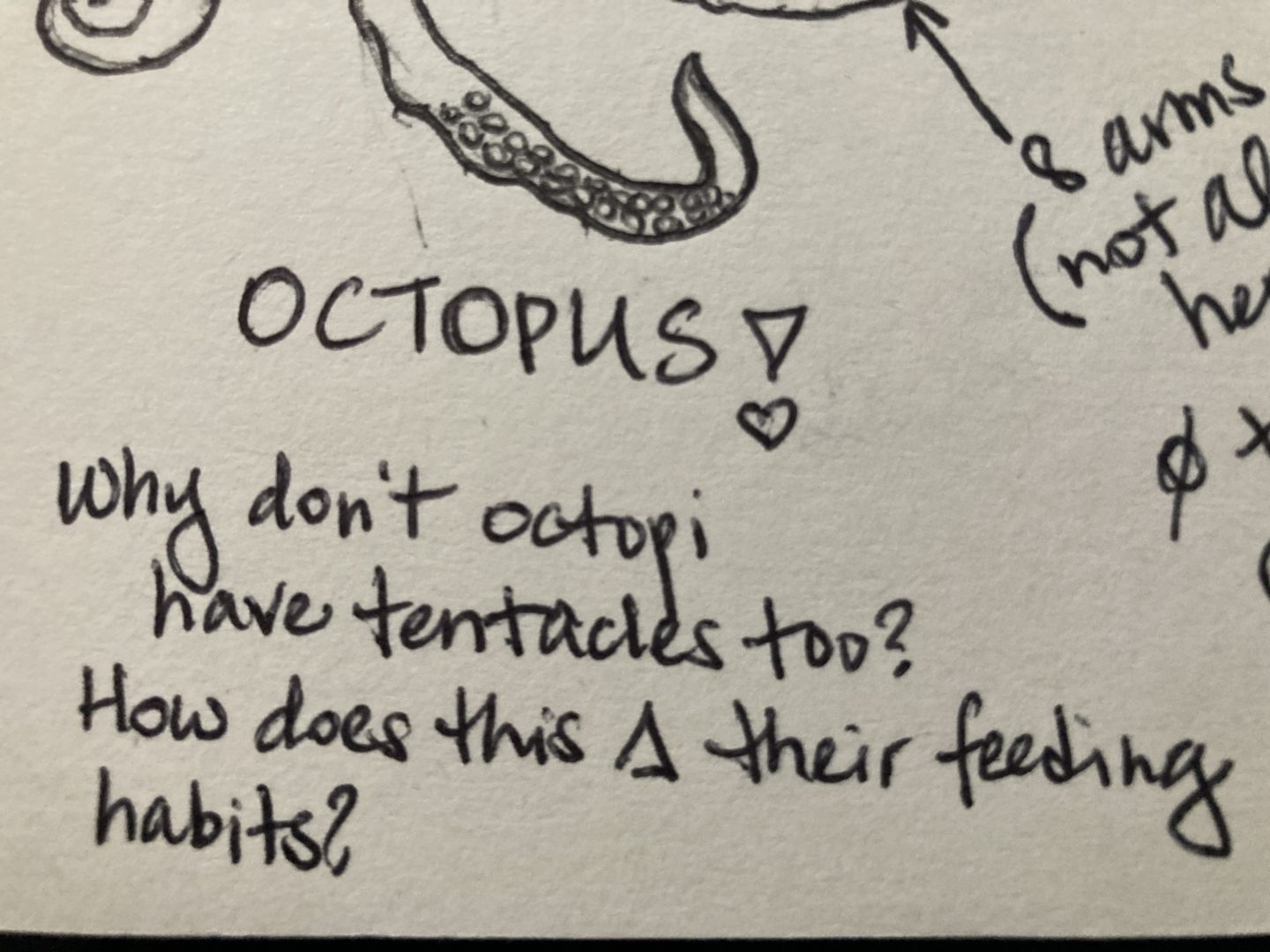Words, pictures, and numbers. Do you feel like one of these speaks to you more than the others? Does one flow with relative ease onto your page, while the others stress or confound you? Keep reading if you want to discover your nature journaling “love language”, and how to increase your fluency in each.
WORDS
When you first see a natural phenomenon, is your first question, “How am I going to describe this?” If it is, then Words might be your primary nature journaling language.
Describing words, questions, lists, I Notice I Wonder It Reminds Me Of Action (also known as INIWIRMOA), written observations, puns… All of these might lie in the realm of words. Words can help give a precision to our observations (sometimes you can say the words “I smell petrichor” better than you can draw it), as well as a richness of expression and culture. Contrary to what we might imagine, ‘words’ don’t always mean what is written – if you’re someone who likes to pun out loud, even though you might dread writing things down, then words might still be an inclination of yours.

Got Friction?
If words are an area of struggle for you, that is OK! What is your source of friction when it comes to using words? Is it…
…that you’re worried about spelling or grammar? If so, please let this article officially tell you that spelling doesn’t matter when it comes to nature journaling. The goal of nature journaling is the connection with nature itself – and if someone attempts to comment on your spelling rather than appreciate the richness of the experience you had, then they need better priorities.
…that you’re worried about eloquence? If it helps, think of your field notes as being like a draft. No one can find the perfect word the first time, and part of nature journaling is exploring how to describe the phenomena we’re seeing. Don’t worry about perfection – instead, have fun and play with your words!
…that writing is cumbersome? You don’t have to write in complete sentences! You can use lists, bullet points, diagrams.
…that you don’t want to ruin your picture with words? What about using a notecard, or drawing on one page and writing your notes on the page facing that one?
…that you’re worried about your handwriting? Remember, this is for YOU. Handwriting doesn’t matter – your thoughts do.
…that you dread a wall of text? What about using different colors of ink for different ideas? Or possibly headings or special fonts for headings? What about boxes? How can you break up the monotony of a wall of text? Be creative!
…that writing is just plain boring to you? If so, then maybe it’s time to break the mold and make it more interesting… Why not try writing a haiku? Or if that seems stressful, what about adding dialogue boxes to your drawings, so that the phenomena you’ve observed can express thoughts or observations? Writing does not have to follow a formula. Words are there to work for you.
PICTURES & NUMBERS
What if your primary nature journaling language isn’t words? Stay tuned for parts 2 and 3, where we explore pictures and numbers!
Need more tips? If so, check out this post. It will walk you through how to nature journal in 10 steps.
Need help choosing nature journaling supplies? Check Nature Journaling Supplies: What You Need and What You Do Not

